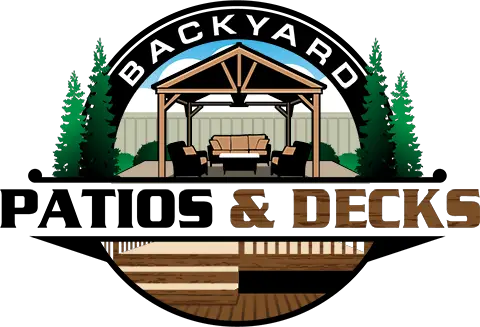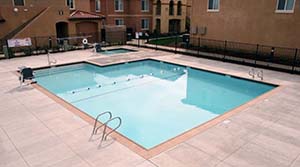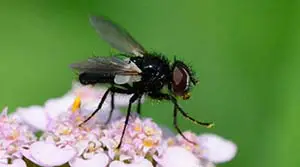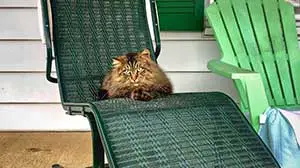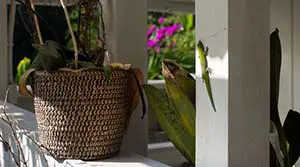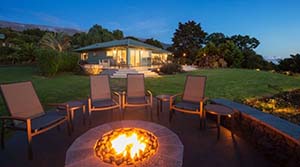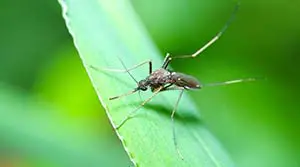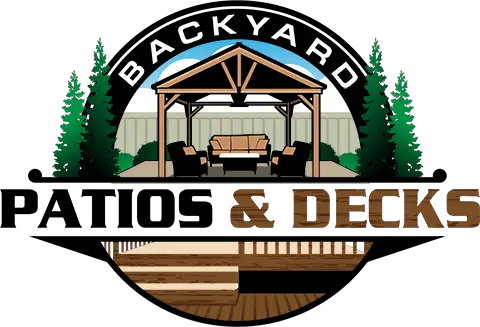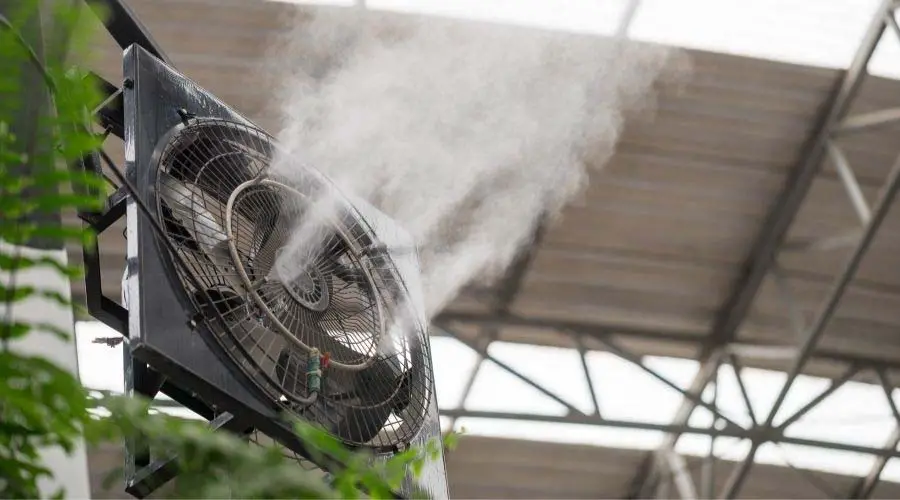
If you have ever walked by a misting fan at a sports game or farmer’s market on a hot day, you were probably impressed with their cooling power. But can you get that same cooling power at home if you live in a humid environment?
Misting fans do indeed work in high humidity. These fans are an effective and economical way to cool outdoor spaces around your home. Their cooling power will be reduced in humid environments but will still work.
Misting fans also provide other benefits to the area. However, you need to ensure you purchase a suitable model for your needs and location to avoid disappointment.
Understanding and purchasing a misting fan can seem a bit daunting. But, we will make it easy by giving you a good deal of how they work and how to buy and install the perfect one for your needs.
How Do Misting Fans Work?
Misting fans have tiny nozzles that spray water into the flow of air created by a conventional fan. In doing so, they remove energy from the air through the process of evaporation.
When functioning correctly, misting fans are working to remove heat energy through three main mechanisms:
- Convection
- Conduction
- Evaporation
1. Convection
Convection involves the process of moving air around your body and other objects. The air movement removes heat from the body and is the primary way an ordinary fan works.
2. Conduction
Conduction, on the other hand, is the loss of heat from contact with a colder substance. In this case, conduction occurs as our skin comes in contact with air or water cooler than our bodies. Conduction occurs with a typical fan but significantly increases by adding water to the system.
3. Evaporation
Evaporation causes cooling during the phase change between liquid water and water vapor. Water absorbs energy to become vapor, which in this case, it pulls out from the air. We can think of a hot object being in a state of high energy, so evaporation would remove some of that energy and cool it down.
Evaporative cooling is also how a swamp cooler works. It blows hot air over a wet filter or sponge element, causing the air to cool as water changes from liquid to gas.
Misting fans work by combining all three of these heat-reducing mechanisms, pulling heat energy out from your body and the surrounding air.
They can be effective in doing so and work in outdoor spaces where air conditioners cannot.
Do Misting Fans Use a Lot of Water?
Misting fans work by spraying water into the jet of air created by the fan, requiring a water source or a self-contained water reservoir. However, they do not need as much water as you might think.
The best systems have nozzles that spray a fine mist, with water droplets between 1.6 and 40 microns. For perspective, a human hair is about 75 microns, and a blood cell is about 5 microns.
A fine mist is required to get the best results as it allows the tiny droplets of water to evaporate much faster. The volume of a water droplet starts to decrease exponentially compared to the surface area as we get smaller and smaller.
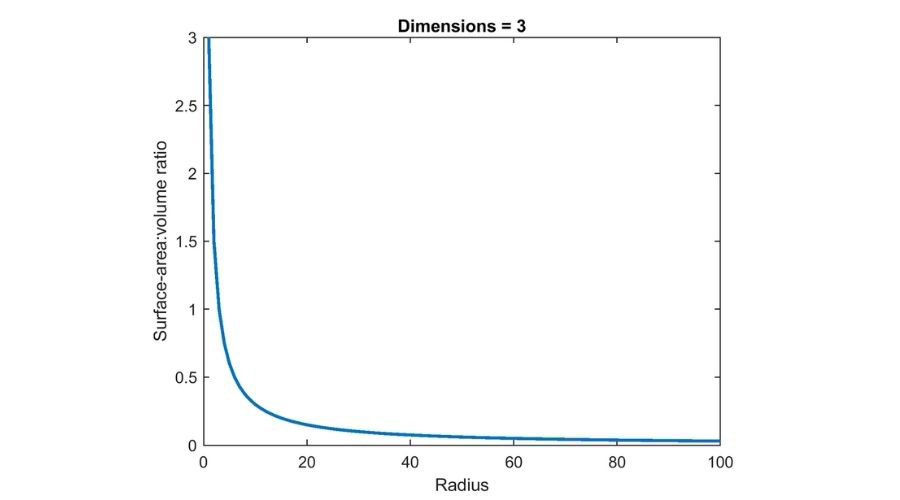
This surface area to volume ratio allows for flash evaporation, the instant transformation from liquid to vapor even in high humidity.
Ideally, these tiny water droplets are what we want to achieve from our mister. If we do that, the unit will not use much water.
It will depend on your unit. Commercial units use between 1.5 and 9.5 gallons of water per hour for each nozzle. This rate translates to a total of about 40 gallons per minute, about the same as a household clothes washer.
Residential units use considerably less, typically no more than 1 gallon per hour. Most stand-alone units have reservoirs that can last a full day of use. Wall-mounted units usually require a water supply hook-up.
Whether or not this amount of water is acceptable will depend on where you live and available water resources.
At What Humidity Do Misters Work?
Misting fans work best when the ambient humidity is low. Low humidity will cause water to evaporate faster and pull more heat energy out of the air and away from your body.
The effectiveness of evaporative cooling will decrease as humidity rises, leaving only the mechanisms of convection and conduction from the fan to cool you down.
When humidity is too high, using misters can also lead to your guests or food getting wet. The water will not evaporate as it travels through the air and will hit the ground or other surfaces. This problem becomes even more significant when misting fans to cool indoor spaces in humid regions.
The maximum cooling effect you can achieve will depend on many factors such as fan speed, water droplet size and flow, and the size of the space. All things being equal, though, the following table will give you an idea of what to expect at different humidities:
| Humidity Level | Expected Degrees of Cooling |
|---|---|
| Less than 40% | Over 30 Deg F of Cooling |
| 40-80% | Up to 20 Deg F of Cooling |
| Greater than 80% | Less than 10 Deg F of Cooling |
The map below will help you decide if investing in a misting fan is right for you. If you live in an area with low average humidity like most Southwest (red), misters can be highly effective.
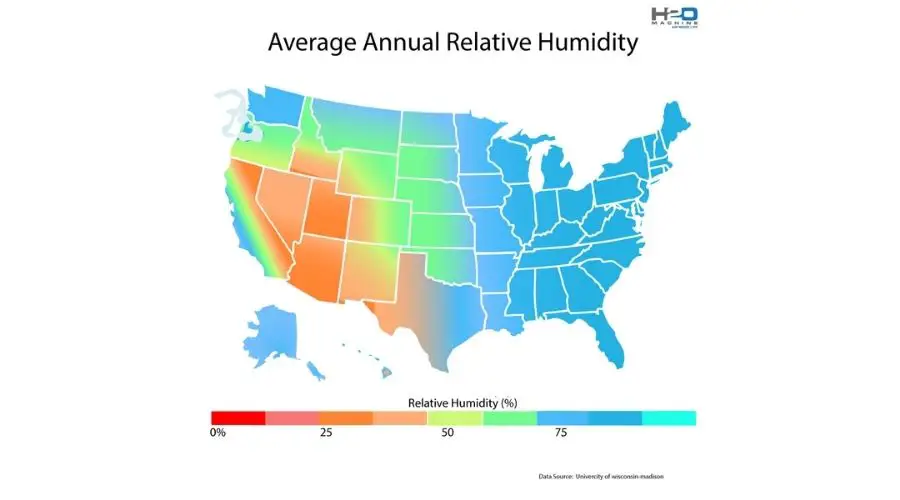
The benefits reduce once we get into more humid areas like the Midwest and Eastern half of the country (blue). They can still work effectively, but you will have to weigh the costs to see a suitable investment.
How Expensive are Residential Misting Fans?
Residential misting fans come in a variety of styles and price ranges. The most important factor we want to consider is water pressure. The higher the pressure, the smaller the droplets, and the more effective the cooling is.
This chart gives you an idea of the water pressure required for adequate cooling:
| Relative Water Pressure | Pressure in PSI | Requirements | Resulting Spray |
|---|---|---|---|
| Low | 20-120 | Garden hose, PVC garden plumbing/sprayers | Fine spray – no flash evaporation |
| Medium | 100-250 | Low-cost/integrated water pump | Mixed fine spray and mist – some flash evaporation |
| High | 800-1200 | High-quality water pump | Mist/fog – abundant flash evaporation |
Some units work based on your garden house or home plumbing pressure. These will generally not achieve enough tiny droplets to create the flash-evaporation effect. These larger droplets are also undesirable as they could lead you and your surroundings to get wet.
Higher pressure units usually require a pump, which can be the most costly part of the system and may need professional maintenance or repairs.
We have created the table below to help you compare prices and features of some ordinary mister fans:
| Make/Model | Water Source | Water Consumption | Water Pressure | Cost |
|---|---|---|---|---|
| Ryobi Portable Bucket Top Misting Fan | Contained (attached to the standard 5-gallon bucket) | About 1.6 gallons per hour | Low | $89.97 |
| Relax-Centric HydroBreeze Standing Oscillating Misting Fan | Self-contained (3.38-quart reservoir) | Not Listed | Low | $109.99 |
| Cool-Off Tropical Breeze Portable Misting Fan | Self-contained 10-gallon tank | 1 gallon per hour | High | $479.00 |
| Eco-Jet Hurricane Reservoir Misting Fan | Self-contained 18-gallon tank | < 1 gallon per hour | High | $1,699.00 |
What are the Benefits of Using a Misting Fan?
In addition to cooling people and the space around them, misting fans also provide other benefits.
1. Cost & Convenience
Misting fans use much considerably less energy than other forms of cooling like air conditioners. They generally don’t require you to make any changes to your outdoor space.
Models intended for indoor use range from about $100-$400. Most are portable and have an attached water reservoir, which generally can last all day.
The portable attachment saves you tons in energy costs over an air conditioner and doesn’t require any tools or professionals to install it.
These factors make misting fans an attractive option for many people in dry environments or with high electrical costs.
2. Cleaner Air
Misters are in industries such as mining to reduce pollutants, smoke, and dust in the air. The tiny droplets of water envelope or adhere to the dust or smog particles and then fall to the ground.
In China, they have installed large misting units around the city for this very purpose. For commercial applications, this is very effective.
Still, it is hard to say if the benefits for most residential areas are the same, as the evaporating water also releases some particulate chlorides.
Many newer models also have an ion-generating mode to improve air quality further when used in the home.
3. Cooler Local Environment
Fans mostly move air around. This action removes some heat from our bodies through convection but does not remove any heat from the environment.
Adding misters, however, actually reduces the temperature in the room or space, meaning you don’t have to stand directly before them to get the benefits.
It also can create a more humid environment in your garden, leading to more lush and healthy plants.
4. Fewer Insects
The water droplets bog down mosquitoes and gnats in the same way as the pollution and dust particles, reducing biting or annoying insects without installing a screen around your deck.
Some residential models even have a mosquito repellent mode to keep them from biting you.
What are Some of the Problems with Using a Misting Fan?
Most of the issues with misting fans are model-specific and involve poor function, maintenance, and repairs. However, there are also a few general downsides to misting fans you should be aware of.
1. Slow Cooling Action
Misting fans work much more slowly to cool an area than an air conditioner would. This is primarily only relevant if you plan to use them indoors, as air conditioning is not usually an option in open spaces.
2. Mold & Mildew
Prolonged use can result in some areas being constantly wet and developing mold or mildew. If water droplets are too large, they will fall to the ground instead of evaporating and cause puddles.
Both can lead to unsightly and unhealthy growth of mold or mildew. The development of algae can also make your deck slippery and dangerous.
3. Maintenance
No matter which fan model you buy, it will require periodic maintenance. Suppose you live in an area with hard water containing many minerals that will build up around the nozzles and other system parts.
As the nozzles operate, water will evaporate directly from the mouth of the nozzle and leave behind a mineral crust. Over time this will obscure the opening and prevent it from operating efficiently.
When this occurs, it will usually result in either large drops or no water output. To clean the nozzles and the tank, you can use a calcium and rust cleaner with high acidity or vinegar for a more health-friendly solution.
Remove the nozzle heads and tubing and soak in the cleaner or vinegar for about 30 minutes before flushing with hot water. You will also want to wipe down the water reservoir to remove any mineral crusts so they don’t dislodge and end up blocking the nozzles.
With many commercial units with separate water pumps, you may need to call a professional to service it.
How Should I Arrange Misting Fans for Best Results?
All misting fans will have an effective range depending on water pressure and fan speed. In most cases, the effective area will be within about 6 to 20 feet.
This means that you may need multiple units to cool some significant areas.
It would be best if you tried to put them up at least 7 feet above the ground with wall-mounted units. Doing so will help to ensure that the water droplets have ample time to evaporate and won’t pool on the floor.
Conclusion
Whether or not a misting fan is a suitable choice for you will depend on many factors. But we hope that this article has helped shed some light on the considerations and helped you start finding the unit that works for your needs.
Sources
